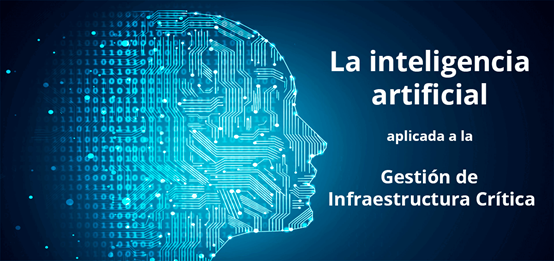How many times did I ask myself this question? Well, I honestly don't know! What is it, and what can this thing called Artificial Intelligence be used for in infrastructure...? I suppose that, just like me at some point, there are more people who have asked themselves the same question, and some may still not have an answer. Well, my intention is that throughout this post, I can address some of these doubts and help explain how the use of Artificial Intelligence can assist us in Critical Infrastructure management.
From time immemorial, humans have been fascinated by "AI" or Artificial Intelligence, as it is intrinsically related to the concept of life itself or the process of creation, or even playing god, an incredibly appealing idea to humans.
In the world of fiction, we have many examples, some for the better with futures where AI serves humanity, and others for the worse with philosophies of fear and the apocalypse of the human race.
These examples range from the literature of Isaac Asimov, from which cinematic titles like "I, Robot" are born, the "Terminator" saga where Skynet, an AI created by humans, becomes self-aware and exterminates humanity, "Blade Runner," a film defined by many as the climax of the science fiction genre, "Matrix," where AI creates a fictional world of control to turn humans into a power source, or from a more positive perspective, "A.I. Artificial Intelligence" by Steven Spielberg, where the first child robot takes the feeling of love beyond what is possible for a human."
From Aristotle (384-322 B.C.), who was the first to describe a set of rules that describe a part of the functioning of the mind to obtain rational conclusions, to 1956 when John McCarthy coined the term 'artificial intelligence' and defined it as 'the science and art of making intelligent machines, especially intelligent computer programs.'
According to Takeyas (2007), AI is a branch of computer science responsible for studying computational models capable of performing activities characteristic of human beings based on two of their fundamental characteristics: reasoning and behavior. Throughout history, many other authors have defined AI within different scopes and contexts.

“What are we as people if not highly evolved machines?“
Marvin Minsky
Years ago, in my "Intelligent Agents" course at the Department of AI at the Polytechnic University of Madrid, I was introduced to various concepts related to AI, which we later put into practice, and they served me for a better understanding of AI. Concepts like Knowledge Databases, beyond data; a set of computationally processed data that becomes knowledge. Inference, as a computational algorithm that infers or acquires new knowledge through both external and internal sources of knowledge. In my case, these two concepts formed the basis of what machine learning means, the DNA of AI.
Today, AI focuses on more than just being a broad concept; it has various applications in different aspects of life:
1. Systems that think like humans.
2. Systems that act like humans.
3. Systems that think rationally.
4. Systems that act rationally.
Next, we will list some examples of AI applications in critical infrastructure management:
1. AI is used in fluid dynamics calculations for heat maps and airflow maps in IT rooms.
2. Electrical capacity calculations for infrastructure based on knowledge of the single-line diagram of a data center and monitored data.
3. Cross-impact analysis involving air conditioning and power to predict outages and service disruptions in data centers.
4. More efficient placement of IT assets based on knowledge of capacity, such as power, space, air conditioning, or other criteria.
5. Capabilities capable of providing recommendations to avoid problems that could affect real devices.
6. Achieving savings through knowledge of electrical phase load balancing in very complex relationship models.
7. Trend analysis of monitoring data with large datasets to predict future situations based on least squares calculations applied to very extensive datasets.
8. And many other AI applications in the field of critical infrastructure yet to be discovered.
While one could debate extensively the level of intelligence of specific AI techniques in critical infrastructure management, what is clear is that, as of today, it is possible to apply significant knowledge inference processes to extensive Knowledge Databases where the data they contain have undergone transformation processes. In this world of Critical Infrastructure Management, everything is interconnected to obtain results that can be applied to reality.
Do you want to know more? Contact us.
 Let it work for you!
Let it work for you!